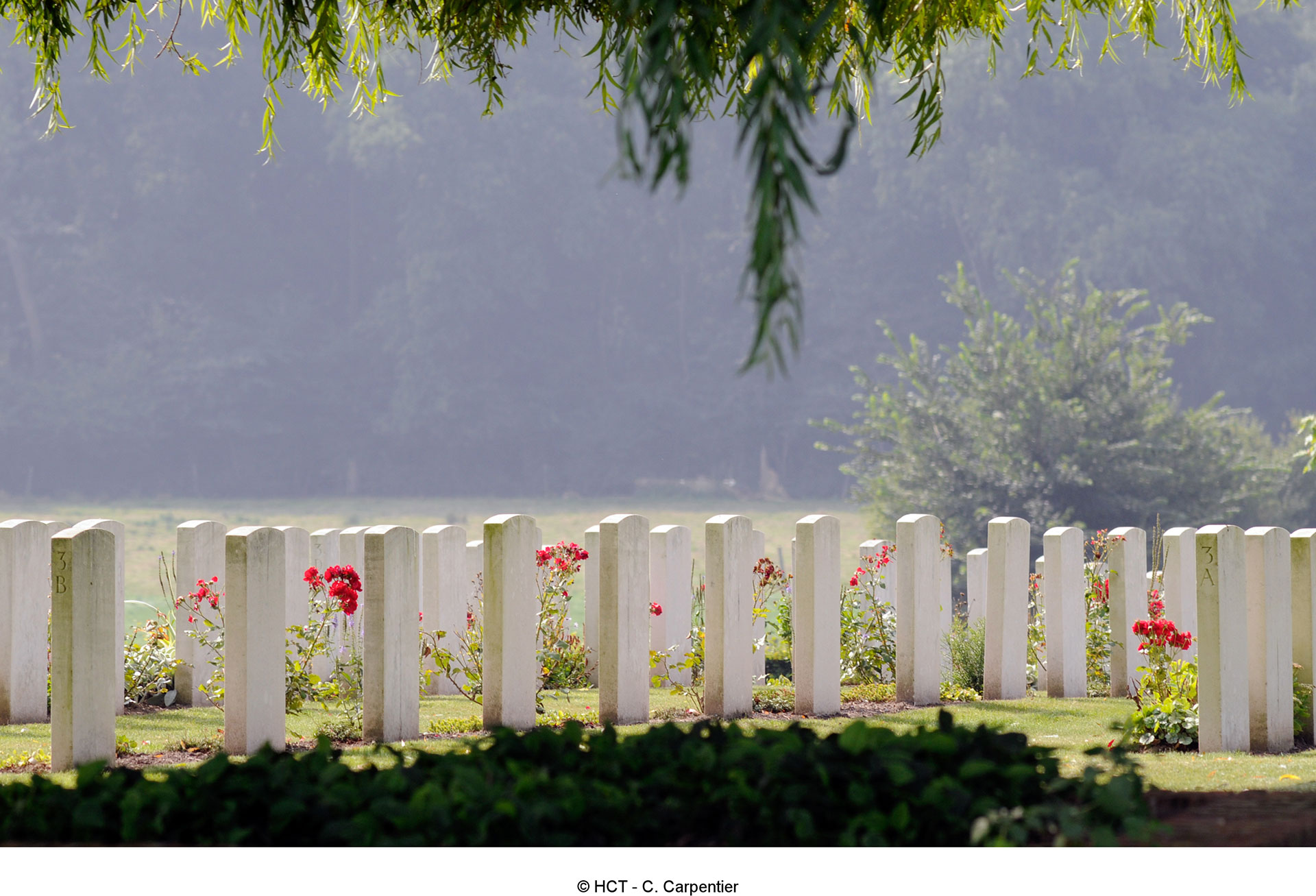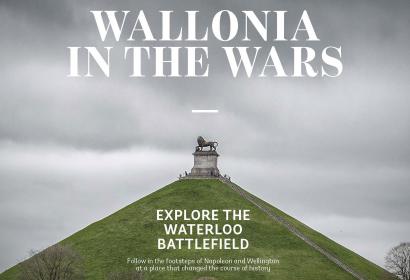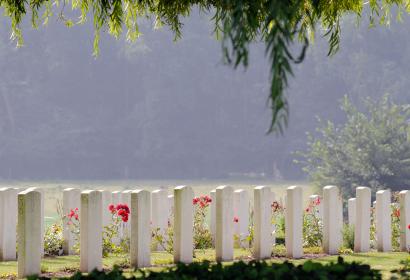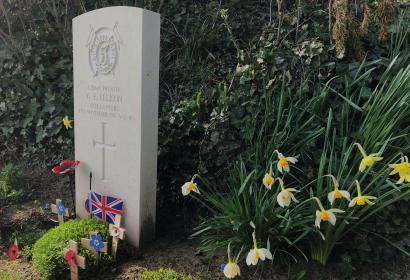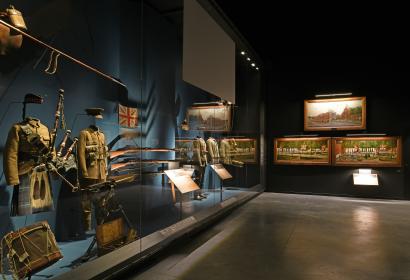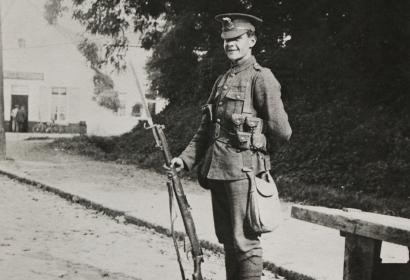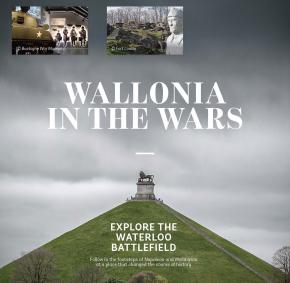Within days of disembarking in France, the hurriedly-organised British Expeditionary Force of 70,000 men marched northwards and engaged the Germans near the Mons Canal in an effort to protect the left flank of the retreating French army. On 23 August 1914, outnumbered two to one and described by a German general as ‘a contemptible little army’, the British fought their first battle on European soil since Waterloo.
For 48 hours ‘The Contemptibles’ held the line, losing 1,600 men but inflicting heavier casualties on the enemy. But defeat was inevitable. Some of the fiercest fightings took place at the Nimy railway bridge, where the first Victoria Crosses were awarded to two British machine-gunners of the 4th Royal Fusiliers, who covered the retreat until they were too badly wounded to continue. One was Lieutenant M. Dease who, although already wounded, took over one of the battalion’s two machine guns to halt the German offensive. He was wounded again and died the next day. The second award was to Private S. Godley. Despite being wounded in the head and back, he took over the other gun and tenaciously fought off the enemy attack, and by doing so gained vital time to allow the withdrawal of the 4th Royal Fusiliers. The legendary Retreat from Mons had begun. It ranks as one of the British Army’s proudest battle honours, but the town would not be liberated until the final day of the war, more than four years later.
Listen to Visit Mons podcast
The Saint Symphorien Cemetery
Two km east of Mons, at St Symphorien Cemetery, lie the remains of the first and last British casualties of the war. The first was 20-year-old Private John Parr of the Middlesex Regiment, a member of a bicycle reconnaissance team who was killed at Obourg near Mons on 21 August 1914. The last was Private George Ellison of the Royal Irish Lancers, who was killed by a German machine-gun an hour and a half before the Armistice was signalled.
This peaceful and pretty burial site - unusual in being divided into British and German sections - is the final resting place of more than 500 servicemen, including 230 British and 60 who remain unidentified.
On the outskirts of Mons, a small communal cemetery in the village of Nouvelles contains a microcosm of World War I from the British perspective. There are nine white headstones. Five of the graves were dug at the start of the war, in August 1914. The remaining four stones, arranged in line, mark the graves of a soldier from each of England, Scotland, Northern Ireland and Wales – all of whom died on Armistice Day.
The George Price memorial
 © George Lawrence Price
© George Lawrence PriceA memorial in honour of George Price, the 25-year-old Canadian private who was shot just two minutes before the ceasefire was signalled and weapons were laid down at 11:00 am on 11 November 1918, can be found in Le Roeulx, by the bridge where he lost his life. Artist Sylvain Patte designed this tribute after seeing a piece of cloth having been worn by the hero on the last day of his life, stained with blood. He therefore titled his tear-shaped sculpture, placed on an angular base with geometric effect Impact: from a bullet to blood and sadness.
The angels of Mons
Mons is rightly proud of the curious coincidence that saw it staging both the first and last Allied engagements of World War One – and the numerous legends that go with it, from the award of the first VCs to the ghostly apparition known as the Angels of Mons, who appeared in the sky and are said to have saved the British troops by enabling them to retreat virtually unscathed from a hopeless position.
